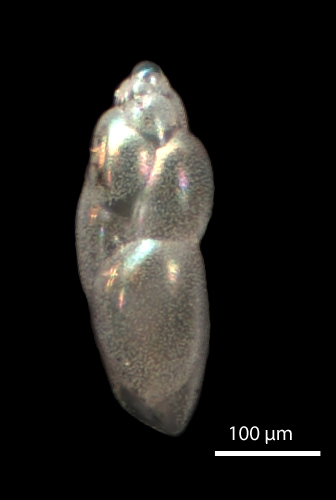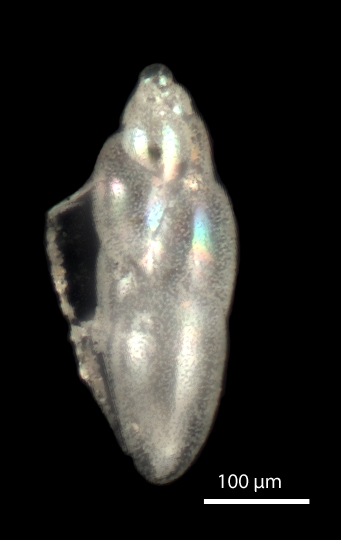Genus – Fursenkoina
Fursenkoina Loeblich and Tappan 1961
Loeblich and Tappan (1961) provided a new name, Fursenkoina, for the genus Virgulina d’Orbigny, 1826 to separate it from Virgulina Borey de St. Vincent, 1823, which is a photosynthetic(algal) protozoan. The type species is Fursenkoina seminuda (Natland, 1938)
Description: Test free, narrow to elongate, rounded in section; chambers inflated, greater in height than breadth, early portion in highly twisted biserial arrangement, later becoming less sigmoid and more typically biserial, sutures distinct, depressed-oblique, wall calcareous, very finely perforated, granular in structure, surface smooth; aperture narrow, elongate, extending up face of final chamber, low part may be closed leaving only suture towards the base of chamber, upper part open resulting in a comma-shaped opening, tooth plate attached sot closed suture of aperture with free folded part extending through apertural opening as slight denticulated tooth , opposite ned of tooth plate attached to previous apertural foramen.
Fursenkoina seminuda (Natland, 1938)
Fursenkoina seminuda (Natland, 1938) Lankford and Phleger, 1973, p. 120, pl. 4, fig. 15.
Virgulina seminuda Natland, 1938, p. 145, pl. 5, fig. 12.
Description: Test elongate, slender oval in cross section, broadest near the middle, tapering to acute initial end usually with a short spine; apertural end subacute; chambers rapidly increasing in height, four pairs usually making up the biserial stage, triserial stage very short; sutures distinct; walls with a band of clear shell area iridescent; aperture sub-terminal, loop-shaped. Length 0.50 mm; breadth 0.12 mm; thickness 0.10 mm.
Distribution: The holotype was collected at 600 m depth off southern California. This species is rare in Puget Sound, having only been found in Boundary and Bellingham bays.


